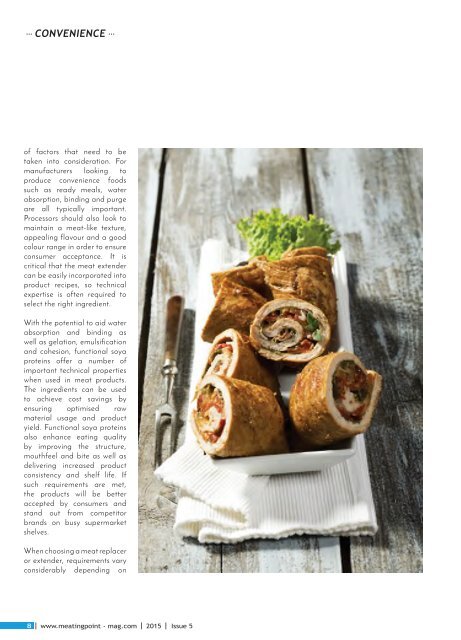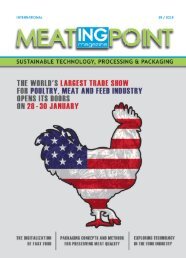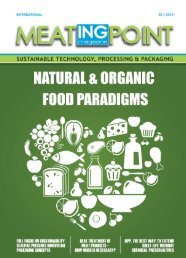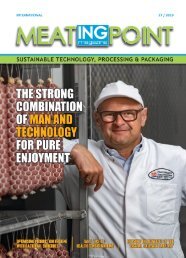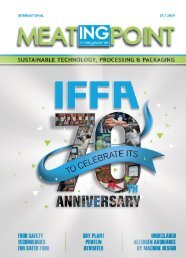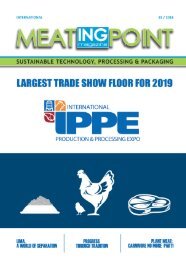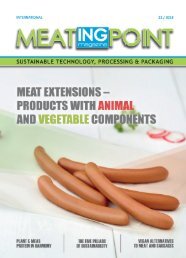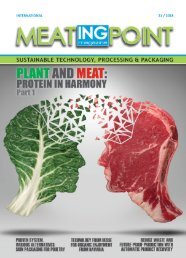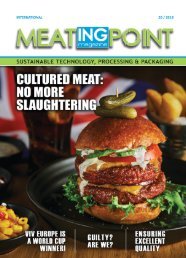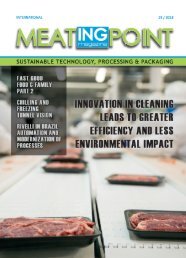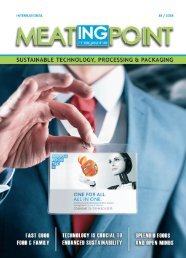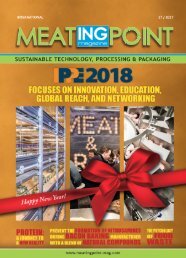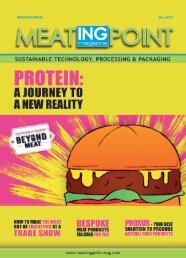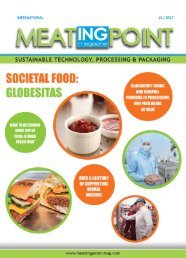MEATing POINT Magazine: #05/ 2015
You also want an ePaper? Increase the reach of your titles
YUMPU automatically turns print PDFs into web optimized ePapers that Google loves.
... CONVENIENCE ...<br />
of factors that need to be<br />
taken into consideration. For<br />
manufacturers looking to<br />
produce convenience foods<br />
such as ready meals, water<br />
absorption, binding and purge<br />
are all typically important.<br />
Processors should also look to<br />
maintain a meat-like texture,<br />
appealing flavour and a good<br />
colour range in order to ensure<br />
consumer acceptance. It is<br />
critical that the meat extender<br />
can be easily incorporated into<br />
product recipes, so technical<br />
expertise is often required to<br />
select the right ingredient.<br />
With the potential to aid water<br />
absorption and binding as<br />
well as gelation, emulsification<br />
and cohesion, functional soya<br />
proteins offer a number of<br />
important technical properties<br />
when used in meat products.<br />
The ingredients can be used<br />
to achieve cost savings by<br />
ensuring optimised raw<br />
material usage and product<br />
yield. Functional soya proteins<br />
also enhance eating quality<br />
by improving the structure,<br />
mouthfeel and bite as well as<br />
delivering increased product<br />
consistency and shelf life. If<br />
such requirements are met,<br />
the products will be better<br />
accepted by consumers and<br />
stand out from competitor<br />
brands on busy supermarket<br />
shelves.<br />
When choosing a meat replacer<br />
or extender, requirements vary<br />
considerably depending on<br />
8 | www.meatingpoint - mag.com | <strong>2015</strong> | Issue 5


